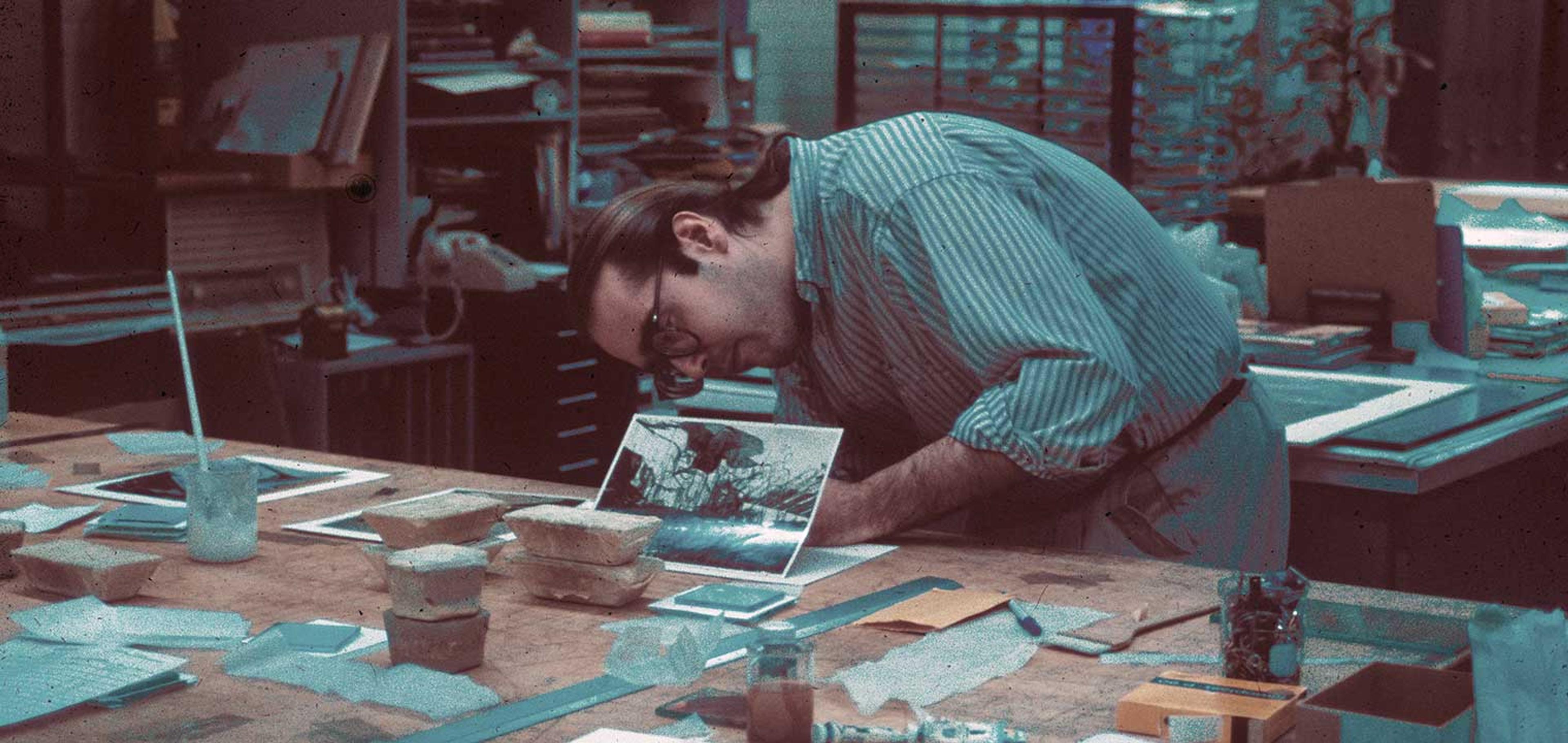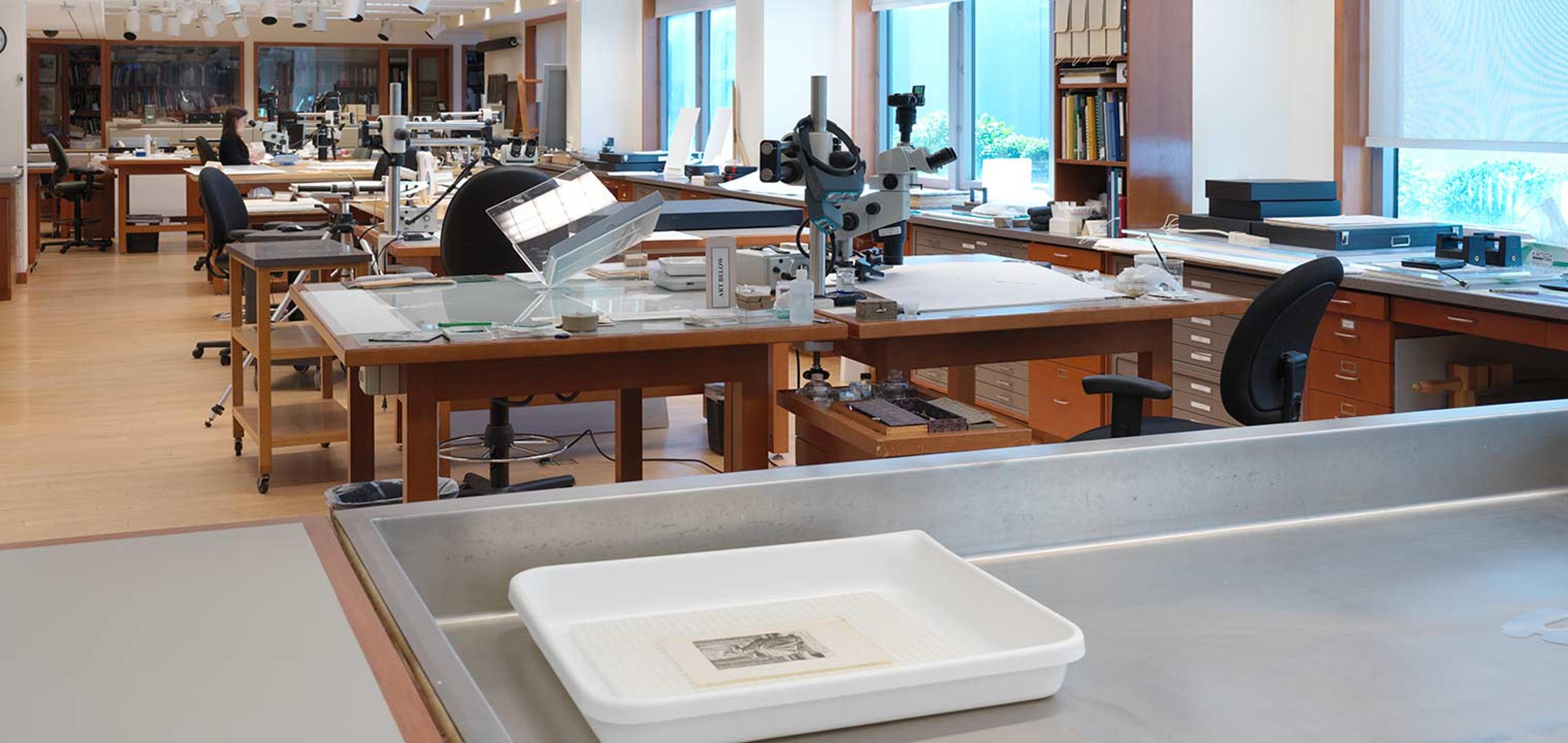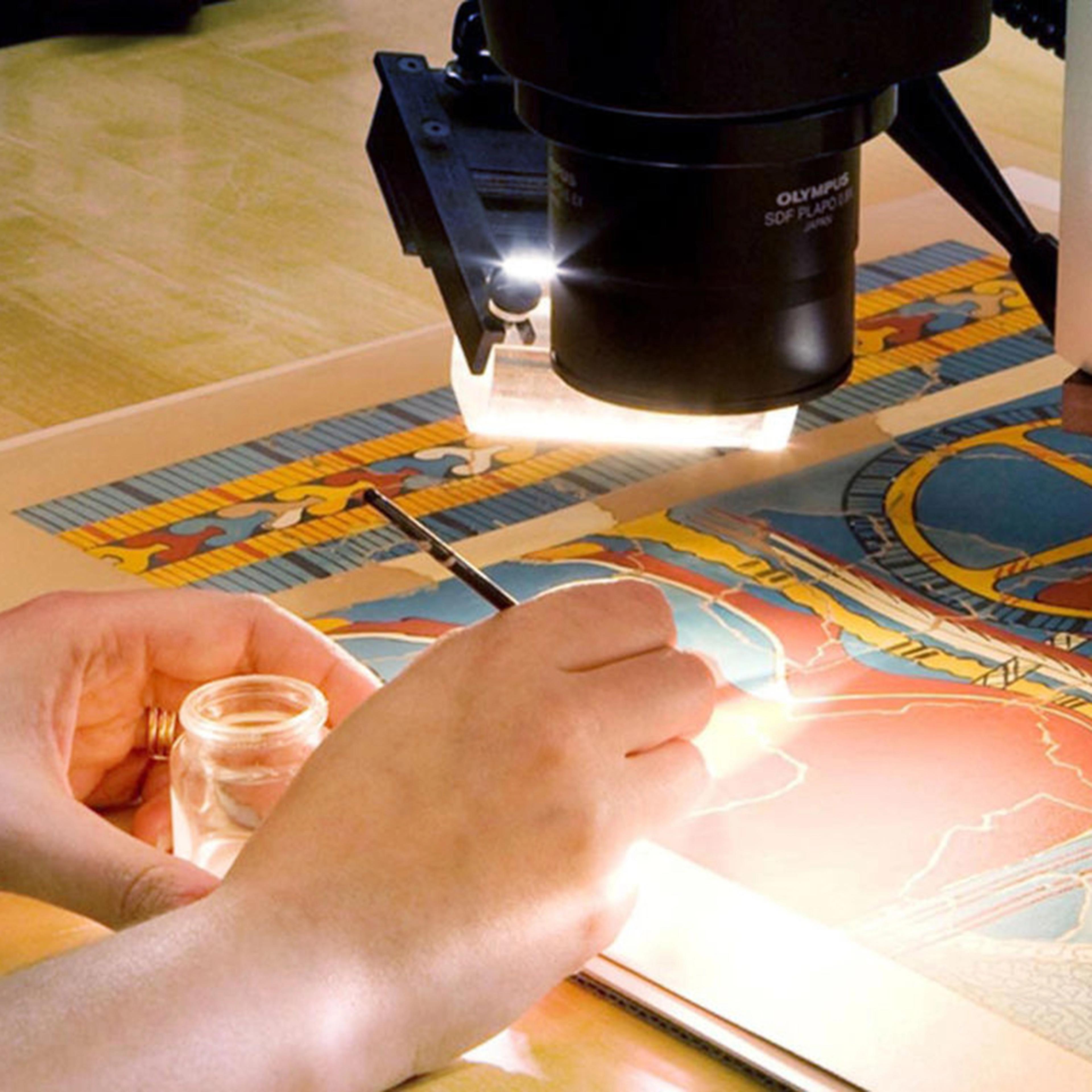Paper Conservation
About Us
The Paper Conservation Department is dedicated to the preservation, technical analysis, and research of works of art from all the Museum’s curatorial departments to contribute to the scholarship of the collection and make objects available for exhibition, education, and study. The Department is part of the Sherman Fairchild Center for Works on Paper, Photograph, and Time-Based Media Conservation, which also includes our colleagues in Photograph Conservation and Time-Based Media Conservation.
The Paper Conservation Department works with objects made of historic, modern, and contemporary material, among which are: drawings in all media and techniques (such as chalk, charcoal, pen and ink, watercolor, and pastel), prints (such as etchings, engravings, and lithographs), Western illuminated manuscripts on parchment and paper, Indian and Islamic paintings and albums, ivory portrait miniatures, palm leaf manuscripts, papyrus, and composite objects, among which are paper-based sculpture, decorative arts objects, and ephemera.
Works on paper, parchment and related natural and synthetic materials are among the most sensitive objects in The Met’s collection due to the physical and chemical nature of their substrates and the variety of organic and inorganic media comprising their design layer. To ensure their preservation, strict exhibition and storage requirements must be maintained. However, they are always on view throughout the Museum. These protocols, established by the paper conservation staff and Museum scientists, include limited display durations, periodic rotation of works on display, restrictions on travel, low light levels, storage in darkness, material specific environmental conditions and methodical handling procedures.

The paper conservation department came into existence in the 1950s to give works on paper in the Museum’s collection the specialized expertise it required. In 2001 the department moved to a state of the art facility that matched with professional evolution of the field such that the Paper Conservation Department’s conservators are highly educated professionals. Their education includes a Masters or doctorate degree that encompasses study of conservation, treatment, examination, preservation of cultural artifacts, history of materials and techniques, art history, conservation science, and instrumental analysis. Our staff includes full-time conservators and a specialist in matting and framing. The department is dedicated to the education of future conservators and hosts Fellows, interns, conservation students, and visiting scholars on a regular basis. Many art historians and conservators use the well-equipped facility on a regular basis to study works on paper.

The department’s state-of-the-art facility includes instruments for nondestructive analysis of works on paper (among them are a Raman microscope, the first to enter a North American museum), a grenze (mircrofocus) X-ray unit, stereo binocular microscopes, environmental monitoring equipment, an infrared camera with a mosaicing system, multispectral imaging, polarizing light microscopes, and photomicrographs systems. It houses a range of technical devices and equipment for conservation treatment (such as large sinks, vacuum suction tables and plates, modified water systems, chemical storage, fume hoods, air evacuations units, and mold remediation areas). Many of these instruments are made possible by the support of the department’s Visiting Committee. The department also includes a large facility for mat-cutting, storage, and display housing, and framing.
Research
Explore a selection of publications by Met Paper Conservation staff.
Artists Kiki Smith and Jacob Samuel discuss their artmaking process and collaborating with other artists.
From symposia, to lectures, and classes, find out about the department’s involvement in a variety of scholarly and educational programs.
Articles, Audio, and Video
Featured
How are works of art created?
Technical examination uncovers the creative process of a work attributed to the Indian painter Nainsukh.
How the artist’s unorthodox techniques fool and delight the eye
